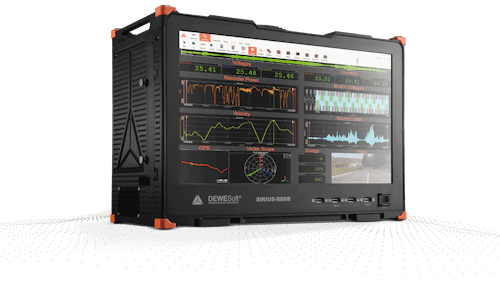
Analizator moči
Zelo natančne meritve in analiza električne energije [AC⚡DC]
Dewesoftovi analizatorji kakovosti električne energije združujejo meritve moči, energije, obsega in FFT v enem samem prenosnem instrumentu. Visokonapetostni vhodi CAT II AC/DC merijo do ±1200 V z natančnostjo 0,03 %. Podprti so vsi tokovni senzorji, ki jih je mogoče skalirati in fazno korigirati z vgrajeno podatkovno bazo senzorjev. Motorji DAQ omogočajo vzorčenje s hitrostjo do 15 MHz, kar omogoča izvajanje najzahtevnejših aplikacij za merjenje moči. Dewesoftovi analizatorji merijo parametre kakovosti električne energije v skladu s standardom IEC 61000-4-30 razreda A. Hkrati je mogoče meriti več faz. Živahni, uporabniško nastavljivi zasloni, vključno z vektorskopi, obsegom, FFT in merilniki, vam omogočajo, da vidite in analizirate svoje podatke kot še nikoli prej.
Preglej izdelke

Zelo natančne meritve in analiza električne energije [AC⚡DC]
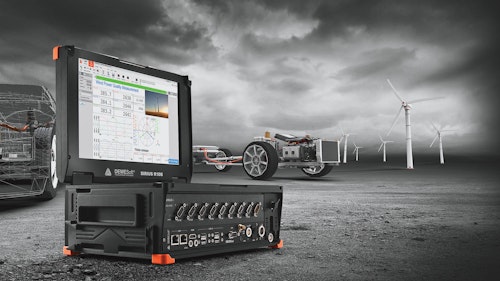
Visoko natančne meritve in analize kakovosti električne energije
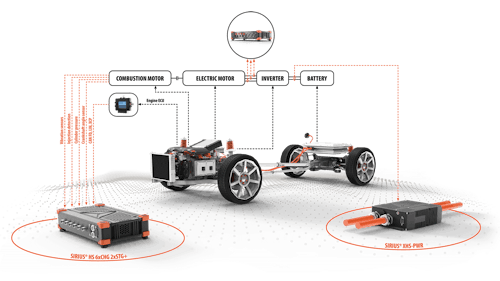
Celovite rešitve za testiranje električnih in hibridnih vozil
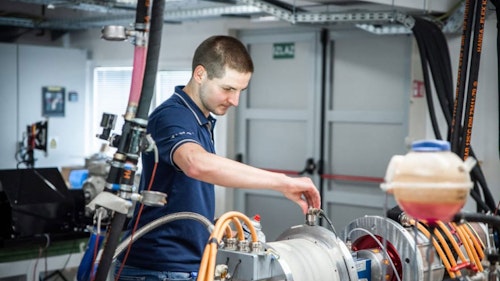
Celovita rešitev za testiranje električnih in hibridnih pogonskih sklopov
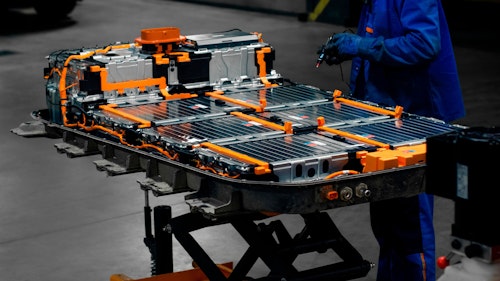
Zelo natančne meritve in analiza podatkov

Rešitve za preskušanje energetskih transformatorjev

Preizkušanje električne energije in kakovosti električne energije na generatorjih vetrnih turbin
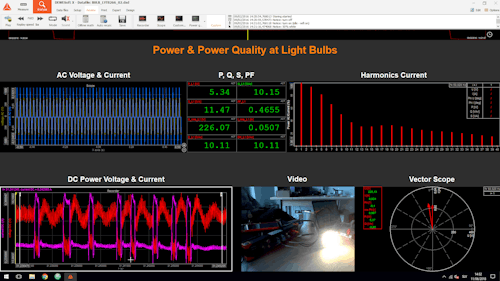
Celovita rešitev za analizo električne energije in testiranje kakovosti električne energije

Testiranje vetrne, sončne in geotermalne energije
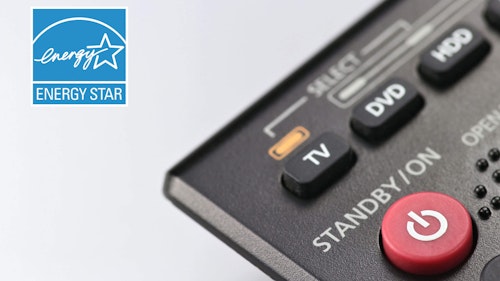
Testiranje porabe energije na elektronskih napravah
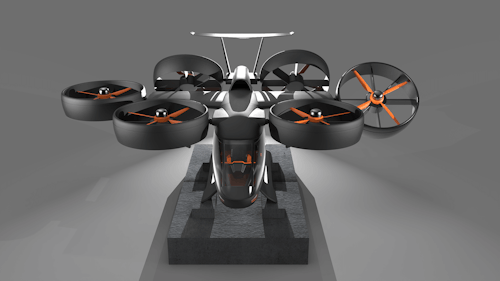
Rešitve za testiranje konstrukcij, elektrike, NVH in letenja

Instrumentacija za popolno testiranje reaktivnih motorjev

Vektorski voltmeter za električna omrežja in električarje
Electrical power is the rate at which electrical energy is transferred by an electric circuit. It is typically measured in watts (W), where one watt is equal to one joule of energy transferred per second. Electrical power can be calculated using the formula:
Power (P) = Voltage (V) * Current (I)
where:
Voltage (V) is the potential difference between two points in the circuit, measured in volts.
Current (I) is the flow of electric charge through the circuit, measured in amperes (amps).
Power quality refers to the characteristics of the electrical power supplied to a system that affect its performance. Good power quality ensures that electrical systems operate efficiently, reliably, and safely. Poor power quality can lead to equipment malfunction, reduced lifespan, and energy inefficiency. Key aspects of power quality measurement include Voltage Stability, Frequency Stability, Harmonics, Transient Surges, Voltage Sags and Swells, Interruptions, and Power Factor.
A power analyzer is an instrument used to measure and evaluate the electrical power characteristics of a system. It provides detailed insights into various aspects of power quality, energy consumption, and electrical performance. Power analyzers are essential tools for diagnosing, troubleshooting, and optimizing electrical systems. They are used in a wide range of applications, including industrial facilities, commercial buildings, utilities, and research labs.
Key functions and features of a power analyzer include:
Voltage and Current Measurement: Power analyzers measure the voltage and current in electrical circuits, providing accurate readings for both AC (alternating current) and DC (direct current) systems. Dewesoft power analyzer can measure direct voltage up to ±2000 V!
Power Measurement: They calculate real power (watts), apparent power (volt-amperes), and reactive power (volt-amperes reactive). This helps in understanding the actual power consumption and efficiency of electrical devices.
Power Factor: Power analyzers measure the power factor, which indicates the efficiency of power usage. A low power factor means more reactive power, leading to higher energy costs.
Harmonics Analysis: They detect and analyze harmonic distortions in the electrical system. Harmonics can cause equipment overheating, increased losses, and interference with other devices.
Energy Consumption: Power analyzers track and record energy consumption over time, providing data on kilowatt-hours (kWh) used. This is useful for energy management and cost allocation.
Transient Analysis: They capture and analyze transient events such as voltage spikes, sags, and swells, which can affect the performance and longevity of electrical equipment.
Data Logging and Monitoring: Many power analyzers have data logging capabilities, allowing continuous monitoring of electrical parameters over time. This data can be stored and analyzed to identify trends and issues.
Communication Interfaces: Advanced power analyzers often come with communication interfaces such as USB, Ethernet, or wireless connectivity, enabling remote monitoring and integration with other systems.
Dewesoft power analyzers deliver exceptional measurement accuracy of 0.03% across a wide bandwidth range of up to 5 MHz. This precision is maintained consistently throughout the entire measurement chain—from the current transducer to the final power calculation.
Whether performing end-of-line power tests or highly dynamic measurements on batteries, motors, or inverters, our solutions ensure reliable and accurate results.
Dewesoft power analyzers offer highly flexible configurations—from standard 3-phase to complex multi-phase setups—available in both single-box and distributed architectures.
Our power analyzers can effortlessly expand to include fully synchronized mechanical measurements such as torque, temperature, vibration, strain, and force. Additionally, a wide range of digital interfaces is supported, including CAN, CAN FD, XCP, Ethernet, video, GNSS, and more.
Dewesoft power analyzers enable easy and precise calculation of hundreds of power parameters, including harmonics, FFTs, energy consumption, and electric motor efficiency. Calculations can be performed in real time—even across multiple parallel power modules with different configurations. With NVIDIA CUDA support, processing can be offloaded to the GPU, ensuring smooth and efficient real-time performance. Additionally, all raw data is securely stored, allowing for complete offline recalculations without the need to repeat any tests.